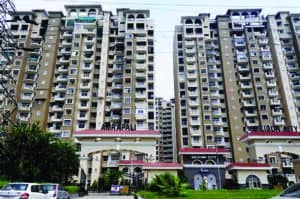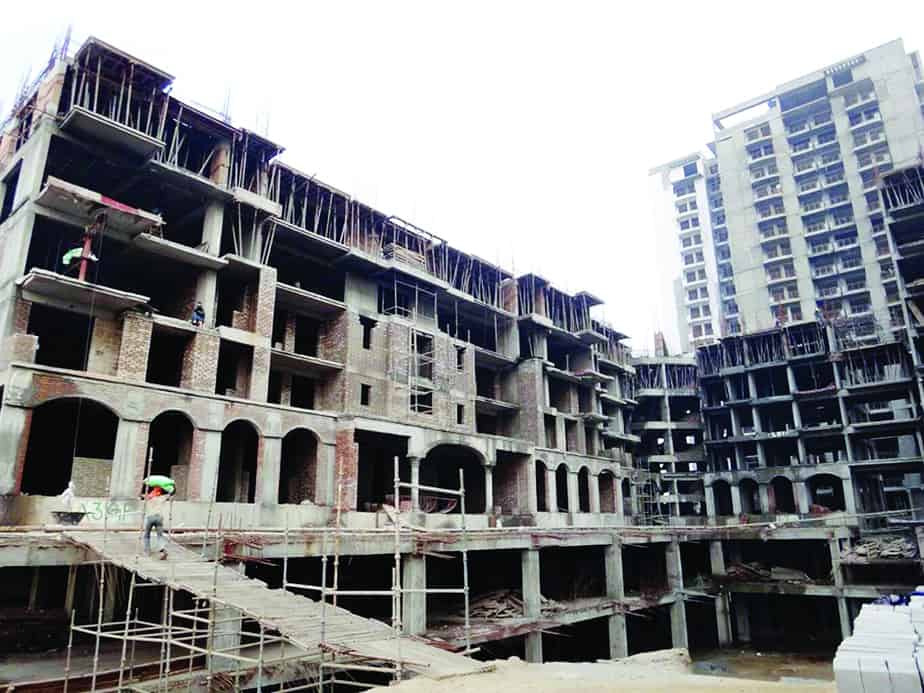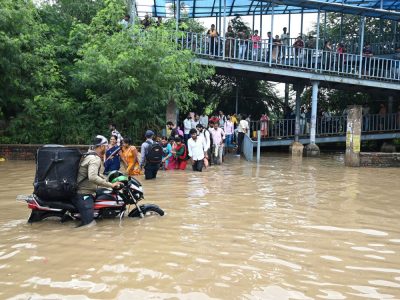The top real estate giants in Delhi-NCR have failed to honour their commitment to homebuyers but a PSU has come to their rescue
The health of the real estate sector is a good indicator of the overall well-being of the economy. Let’s face it. The real estate industry is in doldrums and homebuyers are the real sufferers.
According to a survey recently conducted by JLL — a real estate consultancy firm — it’s estimated that in the National Capital Region (NCR) there are more than 1.5 lakh unsold residential units. The situation is no better in other parts of the country as there are some 4.40 lakh unsold flats in all the metropoles combined. The grave concern is that most of these unsold units in Noida and Greater Noida, nearly 60 per cent of them, are mostly due to incomplete projects.
Ramesh Nair, CEO and country head of JLL India, enumerates the factors that have adversely affected the sector, leading to a slowdown in the overall construction activities — the Real Estate (Regulation and Development) Act of 2016 (RERA), demonetisation and GST. According to an estimate, post-demonetisation, despite a further 20-25 per cent fall in prices of ready-to-move-in and resale flats in NCR, the sales have actually gone down.

So there’s a silver lining. No doubt it’s a bad situation for the real estate giants but it is good news for customers as the prices will remain reasonably low, and therefore buyer-friendly. As a result, though the overall picture is grim, an increase of 10-12 per cent has been registered in the secondary sale of finished flats, as no GST is applicable on completed units.
The unsold inventory has become almost as tall as a skyscraper. The new laws to bring accountability, particularly RERA, has not helped the industry as a whole. India is seeing a drop in the number of jobs in the real estate sector, and this trend is most pronounced in the NCR, particular Noida.
One of the worst sufferers is the real estate company Jaypee Infratech (JAL). The insolvency against JAL has actually put some 30,000 aggrieved homebuyers in a soup. They fear that they will never see the insides of their dream home.
The matter is with the Supreme Court, which stayed the liquidation proceedings against Jaypee, and asked the promoters to deposit J1,000 crore by June 15 to be refunded to the homebuyers. However, in July, this was reduced to Rs 600 crore by the apex court in a relief to the ailing company.
Fali S Nariman, appearing for JAL, has informed that the company has already deposited Rs 750 crore with the Supreme Court’s registry and another Rs 600 crore will be deposited in seven instalments to pay the principal amount to the homebuyers.
The other real estate developer in dire straits is Amrapali Group. At the beginning of this year it was estimated that it would require more than J3,500 crore for Amrapali to complete unfinished projects. Some 24,000 homebuyers have been waiting for years to get possession of their flats as out of the 42,000 flats that Amrapali had sold, 25,000 are yet to be completed.
Despite assurances by the real estate giant, 10 years have passed and buyers have not been given possession of their flats.
Many of them have already paid 90% of the cost of flats. To add to the woes of Amrapali, last year, Bank of Baroda filed an insolvency petition with the National Company Law Tribunal, after the company failed to repay Rs 56 crore loan.
The intervention of the Supreme Court was sought by the homebuyers and now the matter is with the Supreme Court, involving both JAL and Amrapali. The court had issued orders to the Noida and Greater Noida authorities to conduct inspections of all projects and to submit a report on the stages of completion by April this year.
Thanks to the intervention of the apex court, a possible solution is in sight and there’s hope for the homebuyers. Also, after the homebuyers had approached the government, a high-level committee was constituted to salvage the situation. State-run National Buildings Construction Company (NBCC) is likely to take up the projects of JAL and Amrapali to ensure completion and to hand them over to their bona fide owners. NBCC, for coming to the rescue of these two real estate giants, seeks control of the finances through an escrow (third party) account.
As has been indicated, NBCC will also act as a Project Management Consultant and ensure their completion by engaging third party construction companies. Amrapali has already told the apex court that they are willing to complete the project with the help of NBCC. As per the affidavit submitted to the Supreme Court, Amrapali group will be developing a total of 40,987 units, which require J5,112 crore for completion.
NBCC is already executing projects worth J80,000 crore across India, with market cap of more than J18,000 crore, which is second only to DLF. NBCC will, in addition, take over the incomplete projects of both Amrapali and JAL. They have the necessary know-how to do this additional task and should be able to complete the task under J15,000 crore.
This week, an assessment by an NBCC team announced that it will take four years to complete two-thirds of Amrapali’s pending housing projects in Noida and Greater Noida, which includes Leisure Valley, Golf Homes and Dream Valley. The Noida Authority is likely to vet completion of Amrapali’s pending projects by issuing a final occupancy and completion certificates of all projects located in Noida.
NBCC’s intervention can be a role model in the revival and completion of other projects across the country, involving about 4 lakh flats. But this is not a lasting solution, at best it is a stopgap arrangement.





